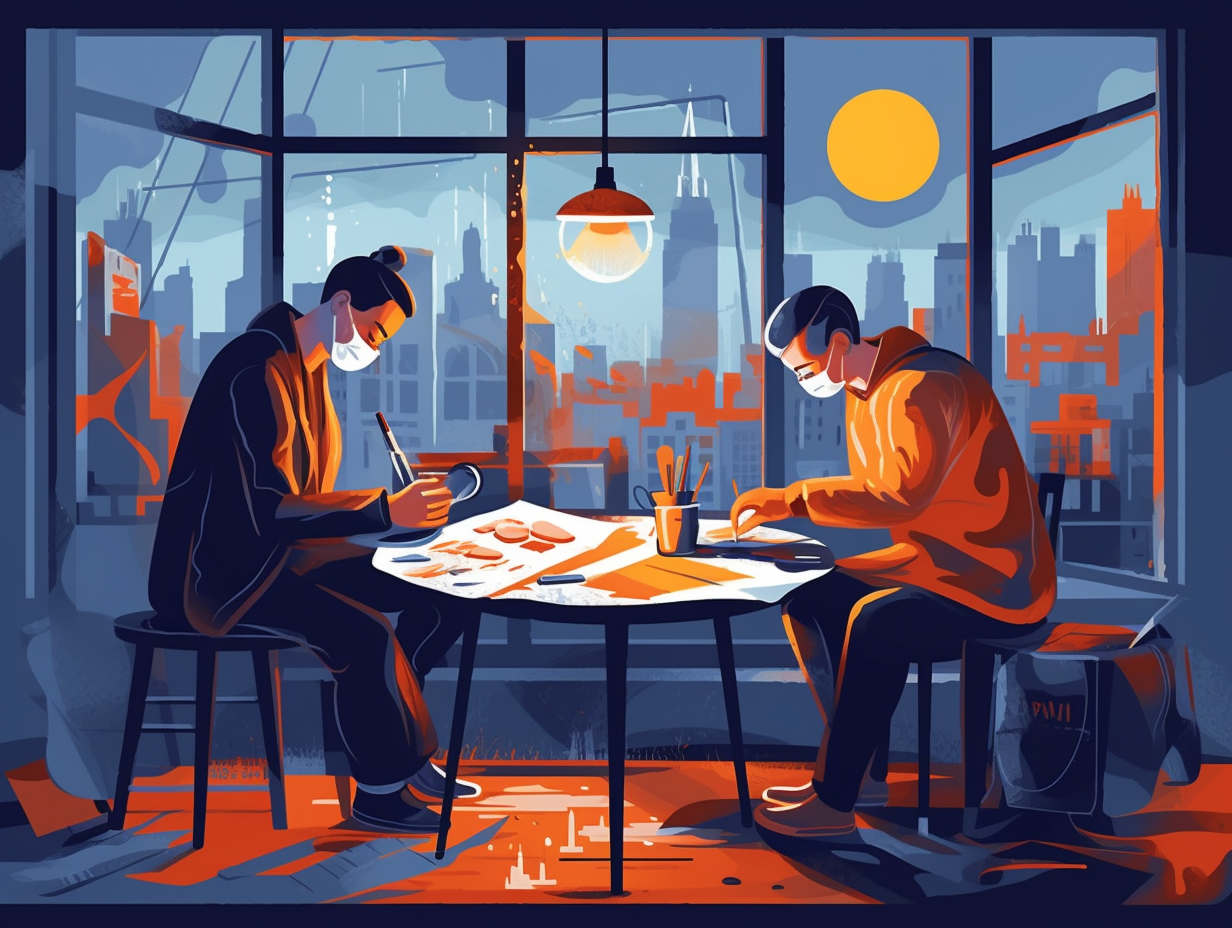Unraveling Mysteries: Top 11 Fun Facts About Forensic Science You Didn't Know

1. Soil Sleuthing
Well, look at that dirt under our feet: it turns out that it's quite the tattletale! Forensic scientists analyze soil to trace the origin of footprints or tire marks at crime scenes, using unique soil properties as identification markers, and conducting various tests like microscopic analysis, density gradient tube, and heat tests to help solve the mystery.
Source => crimemuseum.org
2. Maggot Detectives
Who needs Sherlock Holmes when you have maggots playing detective? That's right, these little squirming crime solvers can actually help determine a person's time of death: Researchers at the University at Albany and John Jay College of Criminal Justice have developed a molecular maggot analysis method that allows for faster and more accurate identification of maggot species from mixtures, revolutionizing the field of forensic entomology and increasing its usefulness in real-life cases.
Source => biotechniques.com

Unravel the mystery of our unique identity, etched right at our fingertips even before we exit the womb! Discover the intricate tale of fingerprints, formed during the 10th week of conception and untouched even in twins!
=> Fun Facts about Fingerprints
3. Sir Arthur's Real-life Crime-solving
Sherlocking it like a boss: Sir Arthur Conan Doyle, creator of the great detective Sherlock Holmes, didn't just solve fictional crimes - he also played a pivotal role in freeing a real-life innocent man, Oscar Slater, who was wrongfully accused of murder. After years of his own Holmesian sleuthing, he managed to expose the truth and help Slater regain his freedom, all while demonstrating the power of using the scientific method to expose a miscarriage of justice.
Source => publishersweekly.com
4. Plant CSI
Move over, Sherlock Holmes – there's a new detective in town, and they're trading magnifying glasses for gardening gloves: Forensic botanists can pinpoint a suspect's presence at a crime scene by examining the pollen and seed particles on their clothing and belongings through the wonders of plant forensics.
Source => kew.org

5. Electro-Revealing Hidden Writing
You know how some people say they wear their hearts on their sleeve? Well, it turns out, sheets of paper might be doing the same thing with their words: forensic document examiners use an electrostatic detection apparatus (ESDA) to reveal indented writing on documents, even several pages down, by covering the page with a mylar material and subjecting it to a high voltage static charge, causing the indentations to retain more black toner and become visible without damaging the original document.
Source => questioneddocuments.com
6. Pollen Power Justice
In a world where pollen reigns supreme and crime scenes get botanical makeovers, one mighty weapon of justice, forensic palynology, is ready to avenge criminals everywhere: This study of pollen and spores was first applied to crack a murder case in Austria during the late 1950s, and though it remains somewhat underutilized, some US institutions have labs dedicated to unraveling the leafy mysteries behind various criminal and drug-related activities.
Source => liberalarts.tamu.edu
7. The Bone Identity
Talk about a real-life "Bone" identity crisis: forensic anthropologists use their bone analysis superpowers to identify age, sex, and ancestry of human remains, while also unearthing critical historical details like the starvation suffered by Jamestown colonists during the harsh winter of 1609-1610.
Source => naturalhistory.si.edu
8. Lipstick Trails
When kiss-and-tell goes forensic: Scientists have found a way to use gas chromatography to quickly and affordably analyze lipstick residue at crime scenes, helping identify the brand of lipstick and potentially placing a suspect at the scene.
Source => smithsonianmag.com
9. Knot a Regular Expert
Whoever said "knot to worry" must have been ahead of their time: Forensic knot experts, like Glenn Dickey, analyze knots used in criminal activities to determine if the knot-tier was left- or right-handed, skilled or novice at knot tying, and even whether the crime was premeditated, helping police and detectives unravel the truth.
Source => atlasobscura.com

10. Serving up a Last Supper Clue
Who said dinner and a show was exclusive to the living? In the case of our dearly departed, their last supper steals the spotlight as an opening act for forensic scientists: Through the inspection of a deceased's gastric contents, these experts can whip up an estimated time of death – whether it's semi-digested identifiable or unidentifiable food particles, or a desolate empty stomach. Although, individual variability in gastric emptying means that the precise time remains an enigma – leaving us hungry for more knowledge on this fascinating fact.
Source => ijcrr.com
11. Microscopes on a Molecular Mission
Next time you're caught red-handed, thank the techno-wizardry of crime scene investigators for turning up the heat on paint, fibers, and plastics: Forensic scientists use digital Scanning Electron Microscopes to examine these solid materials found at crime scenes, identifying them by their molecular fragments.
Source => labs.westchestergov.com
Related Fun Facts




















